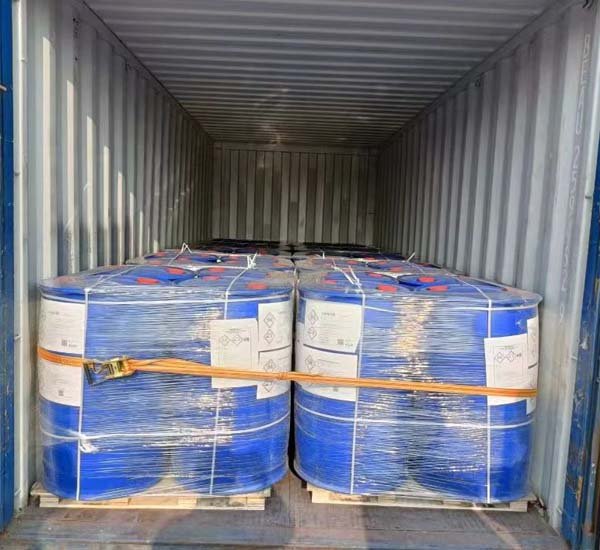3-Mercaptopropionic Acid (3-MPA): A Versatile Thiol Compound
3-Mercaptopropionic acid (3-MPA) is a thiol compound that has garnered significant attention in various fields due to its unique chemical properties and versatile applications. This organic compound is characterized by the presence of a thiol (-SH) group attached to a propionic acid backbone. In this article, we will explore the structure, properties, synthesis, applications, and safety considerations of 3-MPA, highlighting its importance in modern chemistry and industry.
Chemical Structure and Properties
3-Mercaptopropionic acid has the molecular formula C3H6O2S and a molar mass of approximately 106.15 g/mol. Its structure consists of a propionic acid moiety with a thiol group on the third carbon atom. This specific arrangement grants 3-MPA distinct chemical properties, making it an effective reagent in various chemical reactions.
Key Properties:
-
Solubility: 3-MPA is soluble in water and organic solvents, making it versatile for different applications.
-
Reactivity: The thiol group (-SH) in 3-MPA is highly reactive, allowing it to participate in various chemical reactions, including nucleophilic substitutions, disulfide bond formation, and metal complexation.
-
Acidic Nature: The presence of the carboxylic acid group (-COOH) makes 3-MPA an acid, which can donate protons in solution and influence pH levels in chemical processes.
Synthesis of 3-Mercaptopropionic Acid
3-MPA can be synthesized through several methods. One common approach involves the reaction of propylene oxide with hydrogen sulfide in the presence of a catalyst. This method allows for the direct formation of 3-MPA from readily available starting materials. Alternative synthetic routes include the reduction of 3-thiopropionic acid or the hydrolysis of thioesters.
The purity of synthesized 3-MPA can be crucial, as impurities may affect its performance in various applications. Therefore, purification processes such as distillation or chromatography are often employed to obtain high-purity 3-MPA.
Applications of 3-MPA
3-Mercaptopropionic acid has a wide range of applications across different industries:
1. Chemical Synthesis
In organic chemistry, 3-MPA is widely used as a building block for synthesizing various thiol-containing compounds. Its reactivity allows it to participate in the formation of thiol-ether linkages, which are essential in creating more complex molecules, including pharmaceuticals and agrochemicals.
2. Biotechnology
3-MPA plays a vital role in the field of biotechnology, particularly in bioconjugation reactions. It is often used to modify biomolecules, such as proteins and peptides, through thiol-disulfide exchange reactions. This modification can enhance the stability, solubility, and bioactivity of therapeutic proteins, making them more effective in medical applications.
3. Polymer Chemistry
In polymer chemistry, 3-MPA is used as a thiol monomer for the synthesis of thiol-ene and thiol-yne polymers. These polymers exhibit unique properties, such as enhanced mechanical strength and flexibility, making them suitable for various applications, including coatings, adhesives, and sealants.
4. Metal Ion Chelation
Due to its thiol group, 3-MPA can effectively chelate metal ions, forming stable complexes. This property is particularly useful in environmental chemistry, where 3-MPA can be employed in the removal of heavy metals from contaminated water sources. By forming complexes with these metals, 3-MPA helps to reduce their toxicity and facilitate their removal.
Safety Considerations
While 3-Mercaptopropionic acid has numerous beneficial applications, it is essential to handle it with care. The compound can be irritating to the skin, eyes, and respiratory tract. Appropriate personal protective equipment (PPE), including gloves, goggles, and masks, should be worn when working with 3-MPA to minimize exposure.
In addition, 3-MPA should be stored in a cool, dry place, away from incompatible substances such as strong oxidizers. Proper disposal methods should be followed to ensure environmental safety, as thiol compounds can be toxic to aquatic life.
Conclusion
3-Mercaptopropionic acid (3-MPA) is a versatile thiol compound with a wide range of applications in chemistry, biotechnology, and environmental science. Its unique properties, including reactivity and solubility, make it an invaluable building block for synthesizing complex molecules and enhancing the performance of various materials. As research continues to uncover new applications and synthetic routes, 3-MPA is poised to play an increasingly important role in advancing science and technology. However, safe handling and storage practices are crucial to mitigate any potential hazards associated with this compound.


